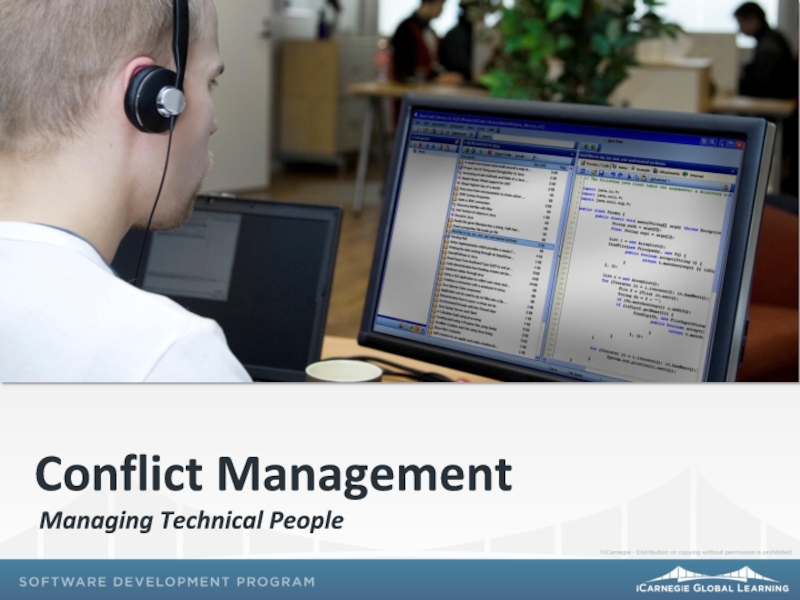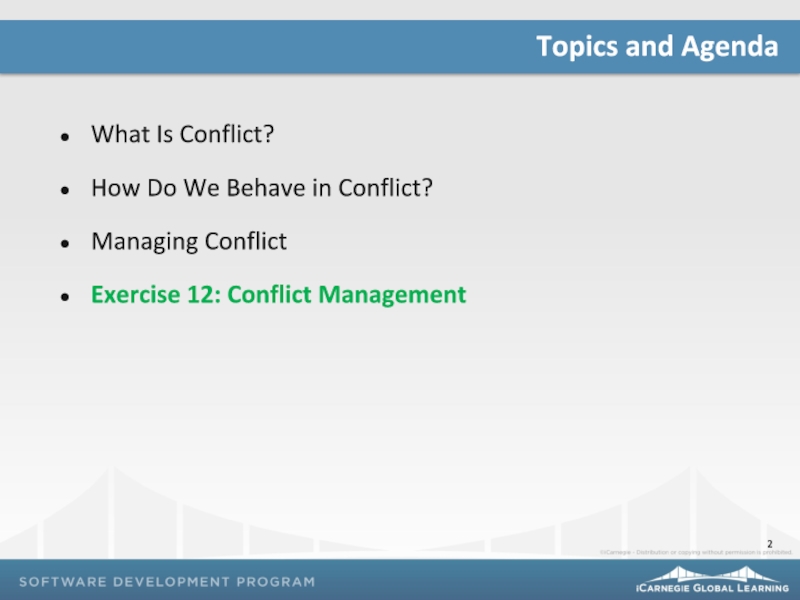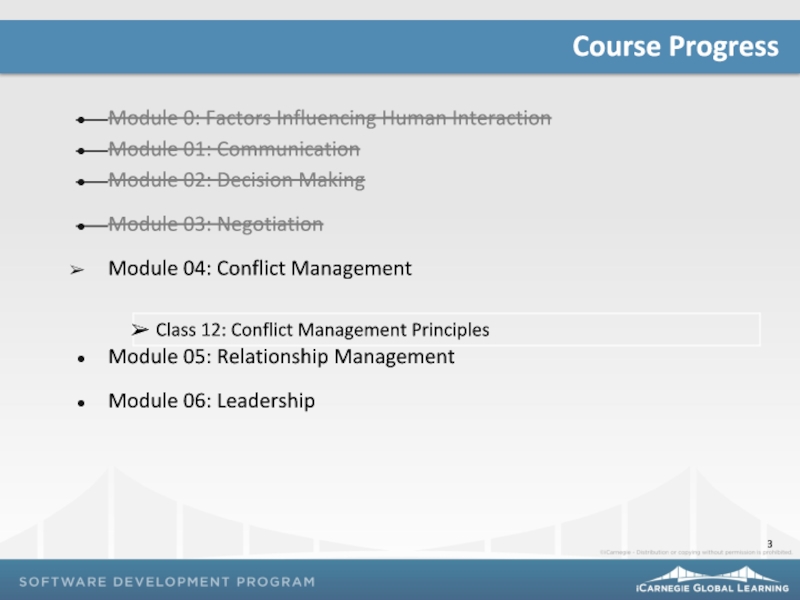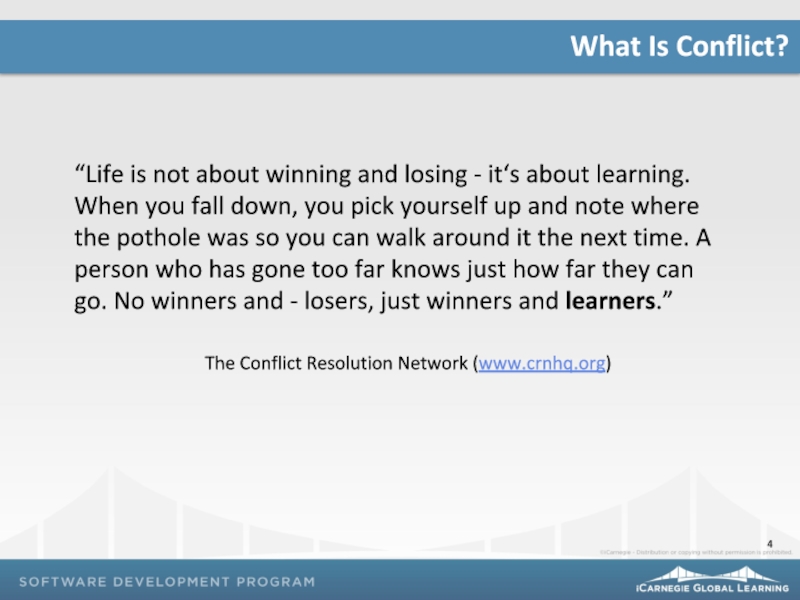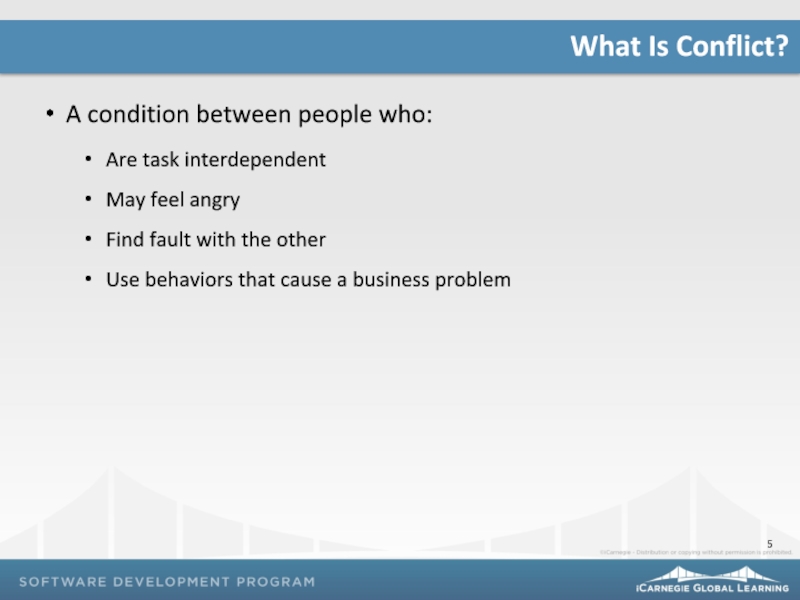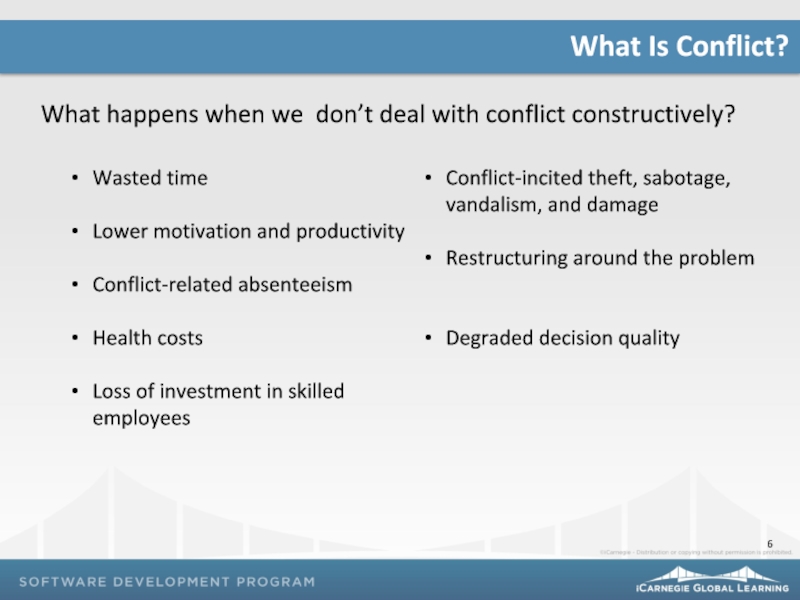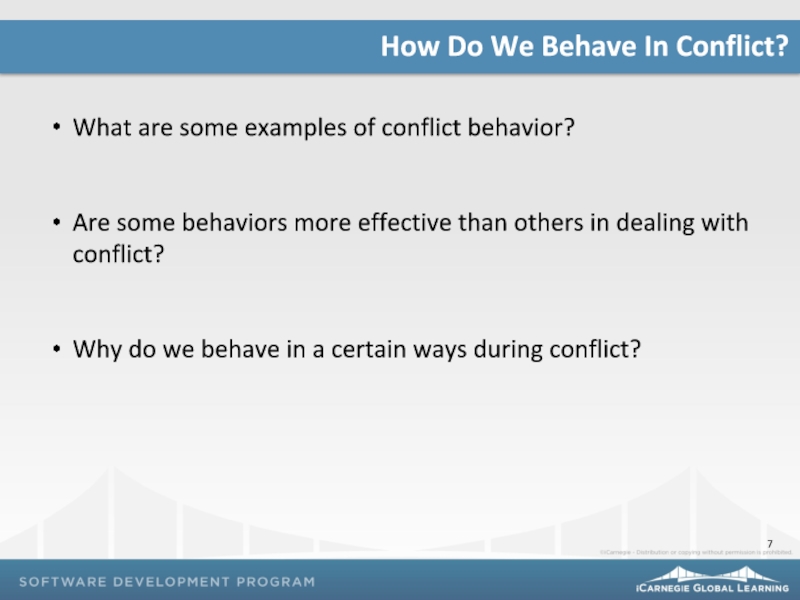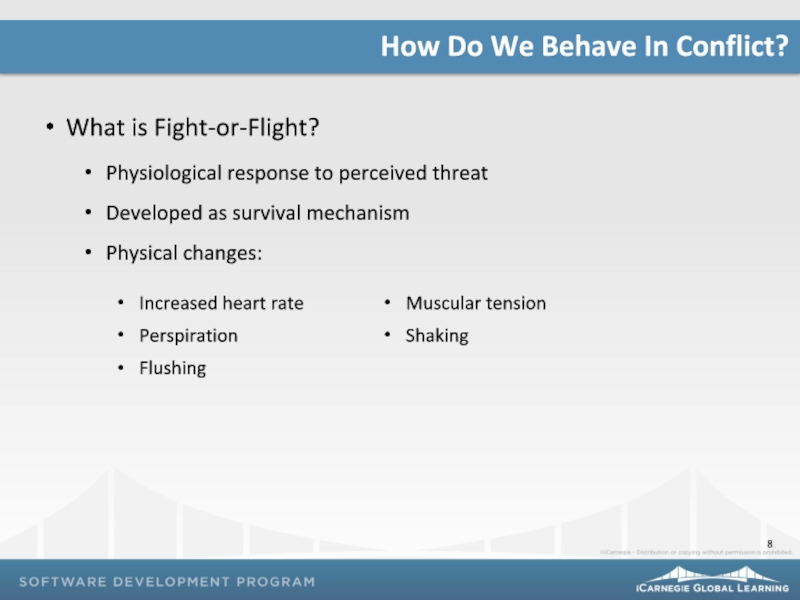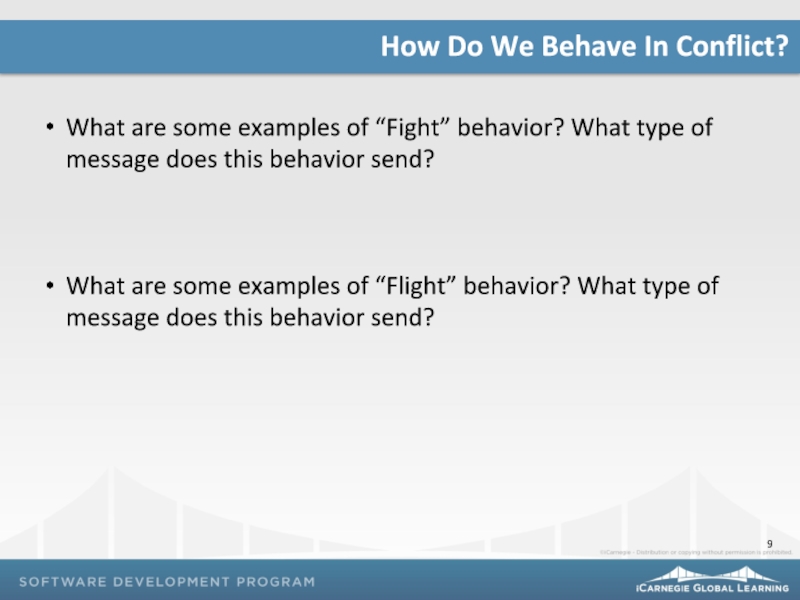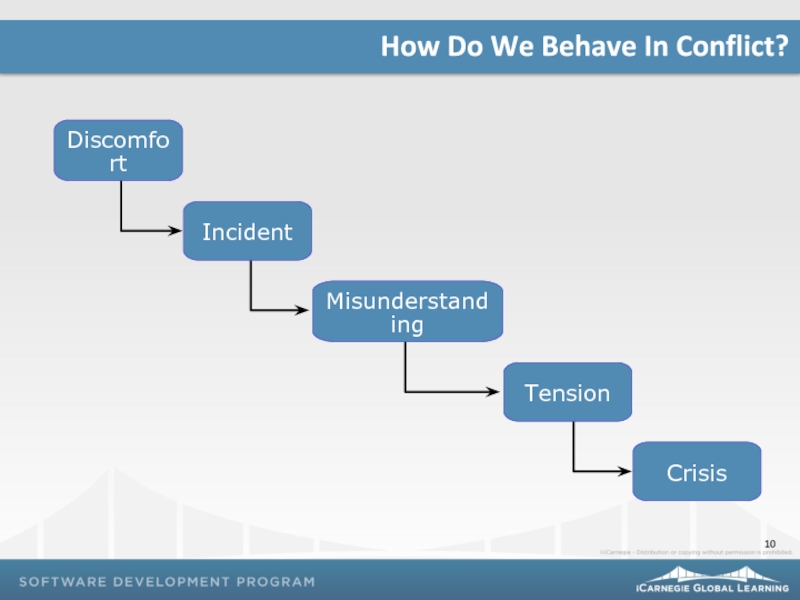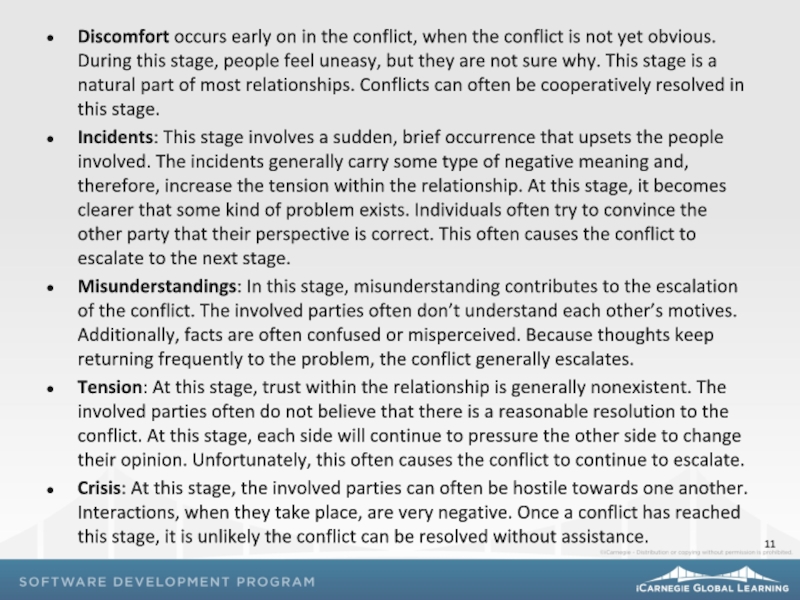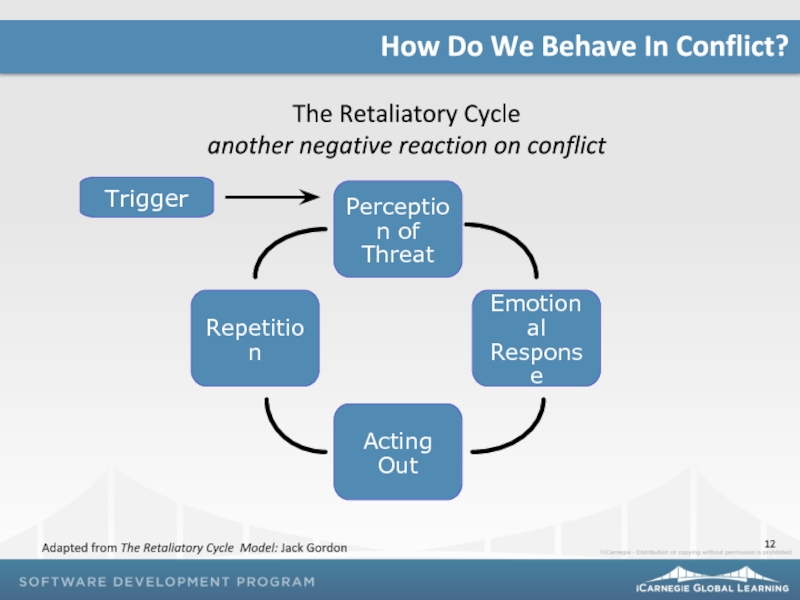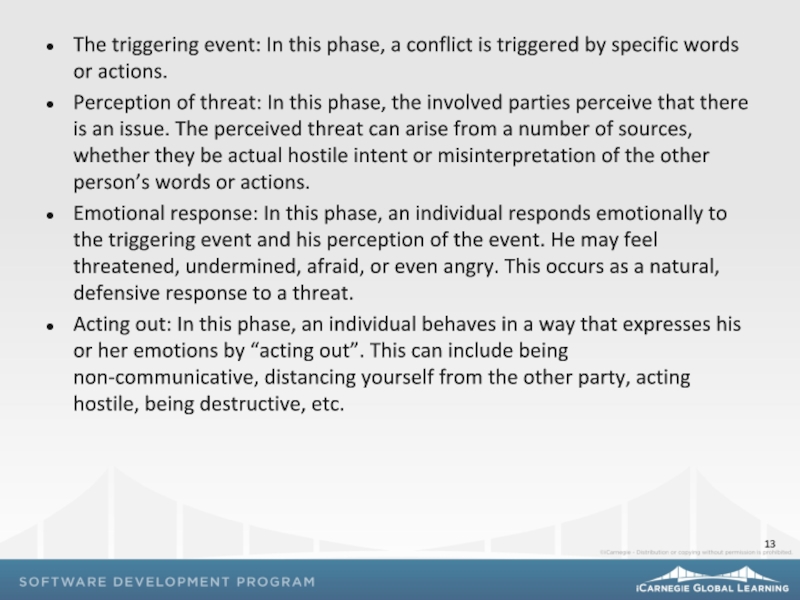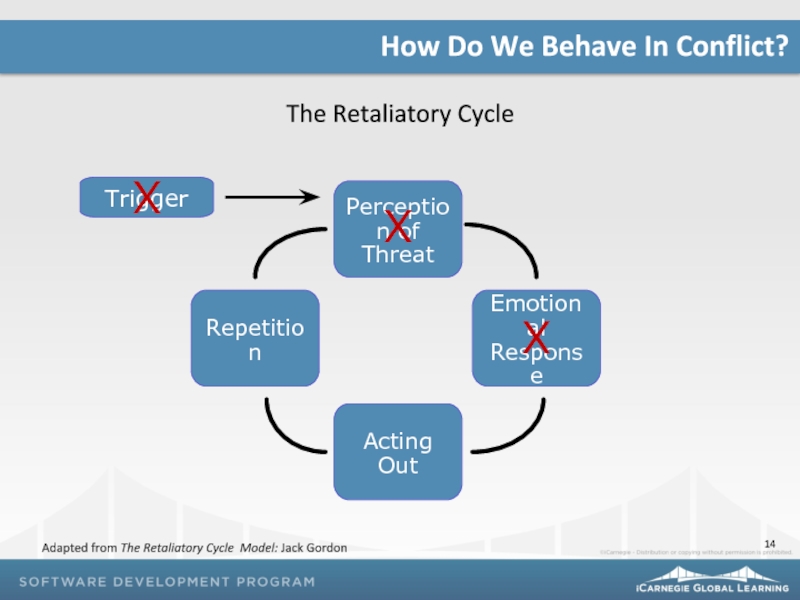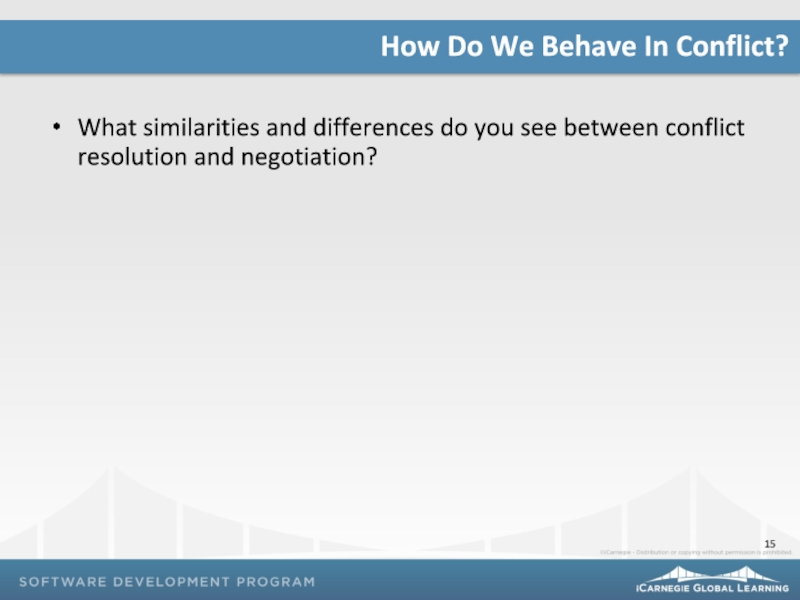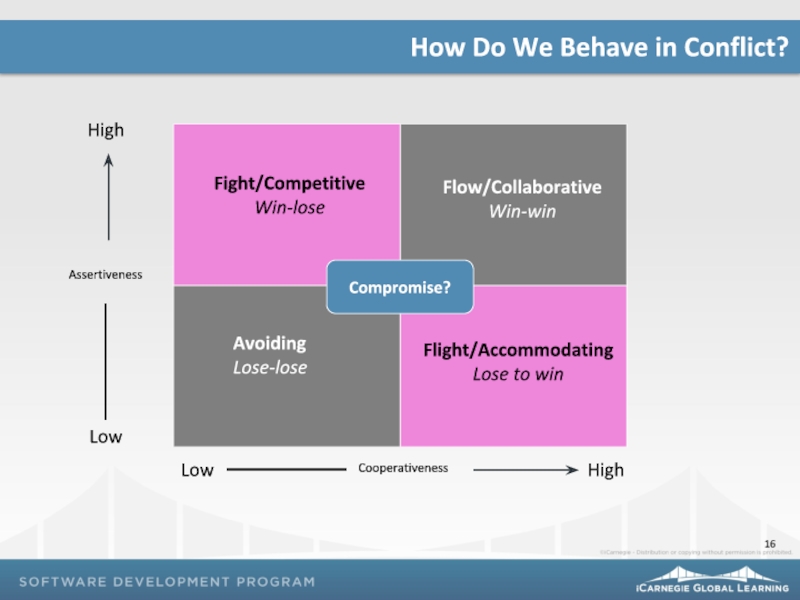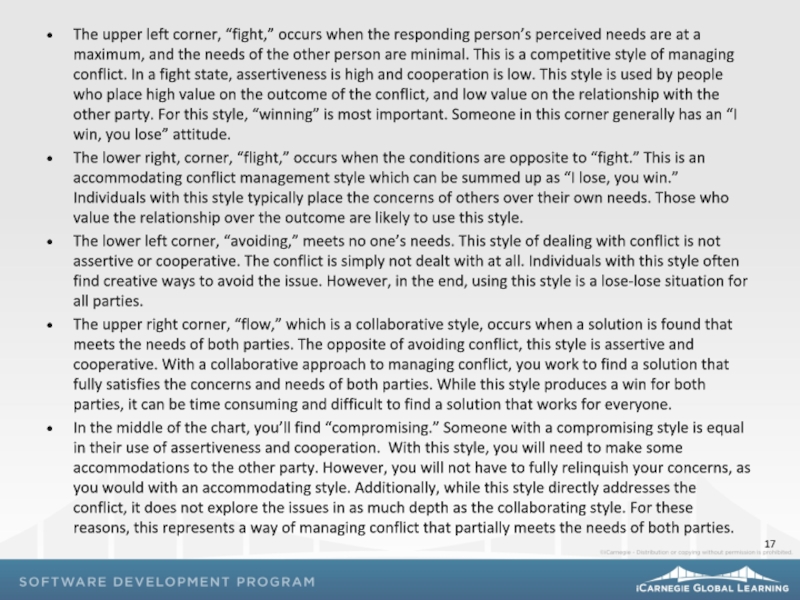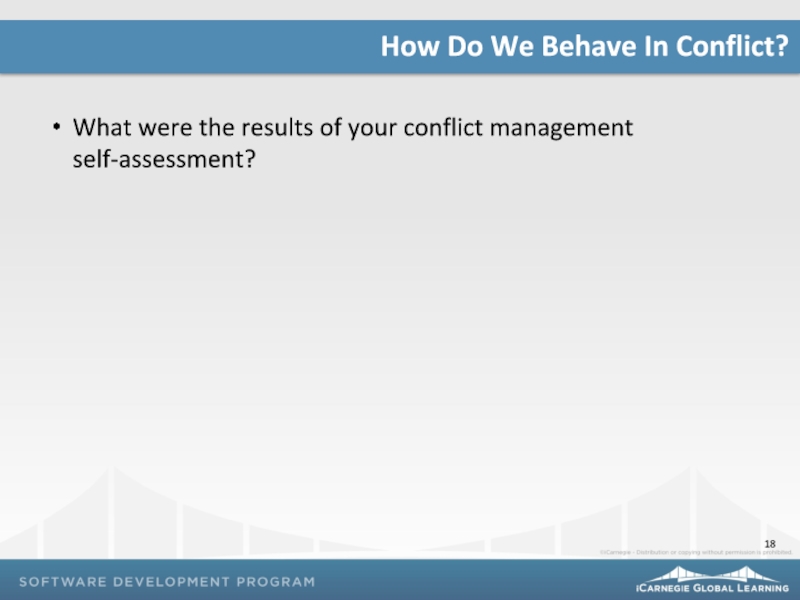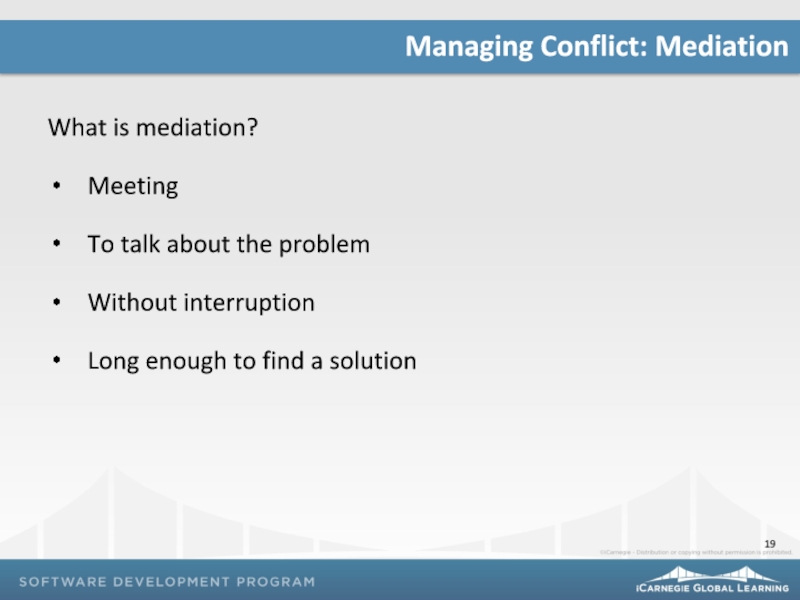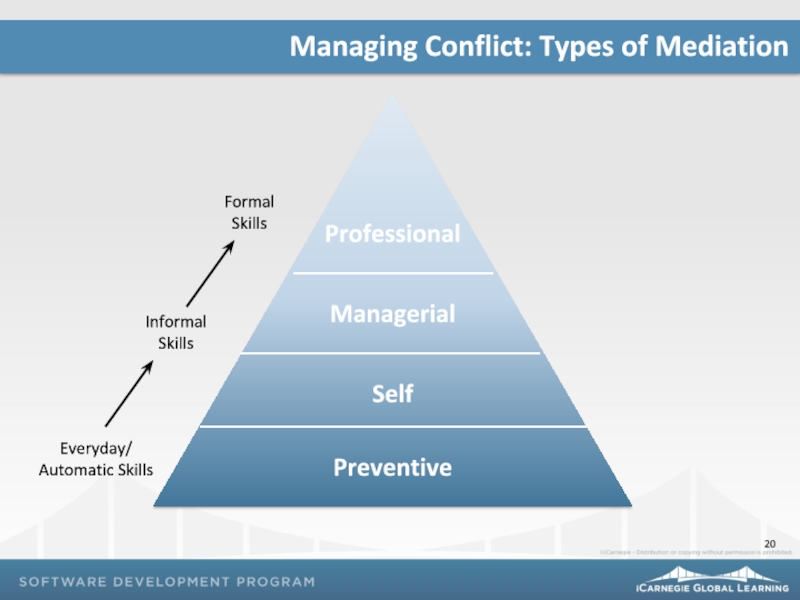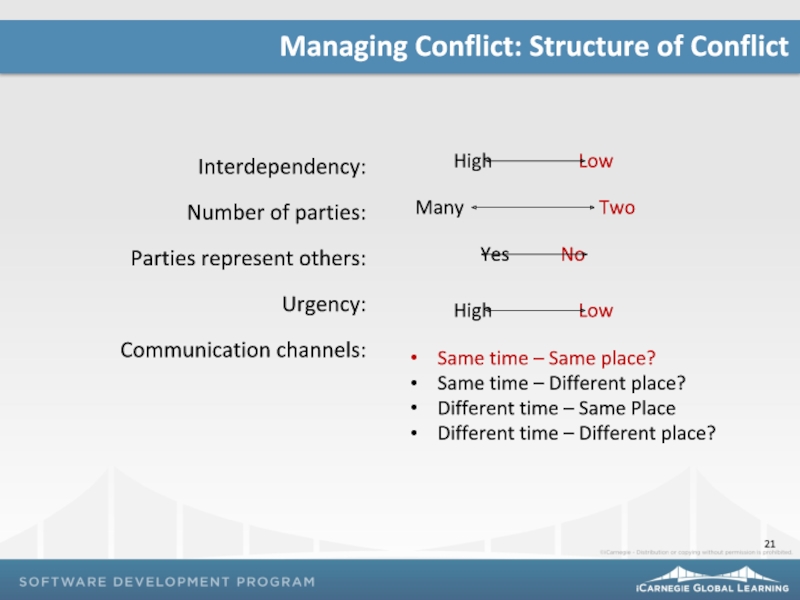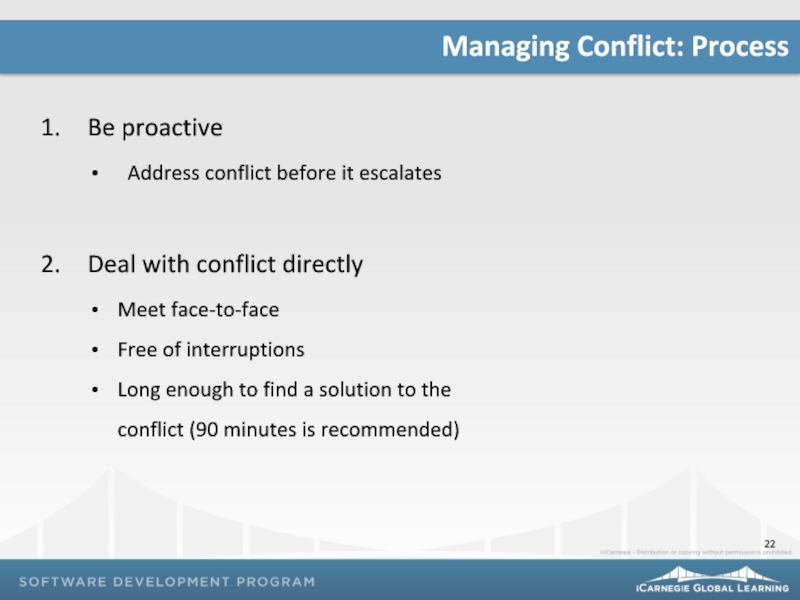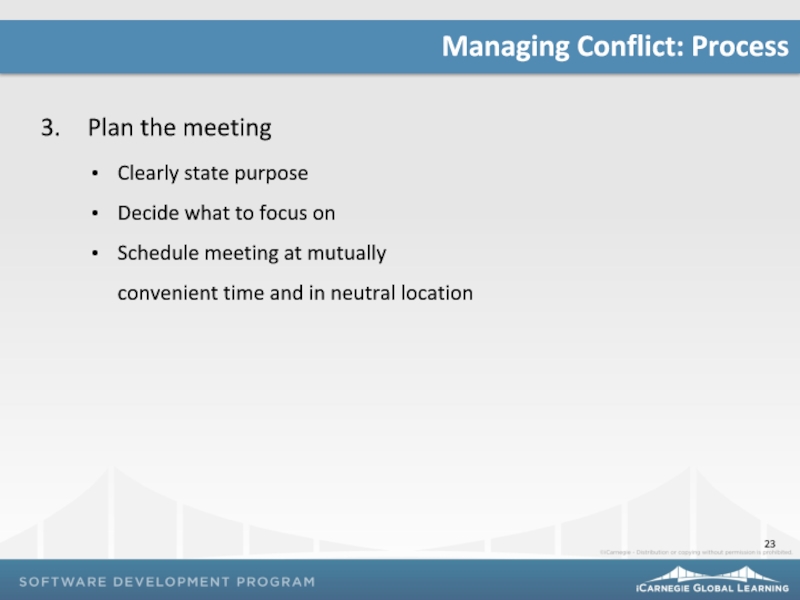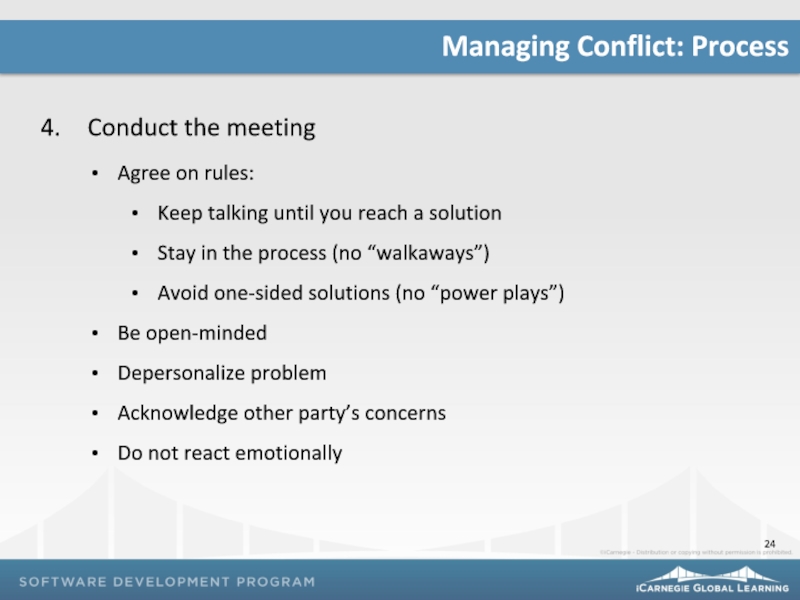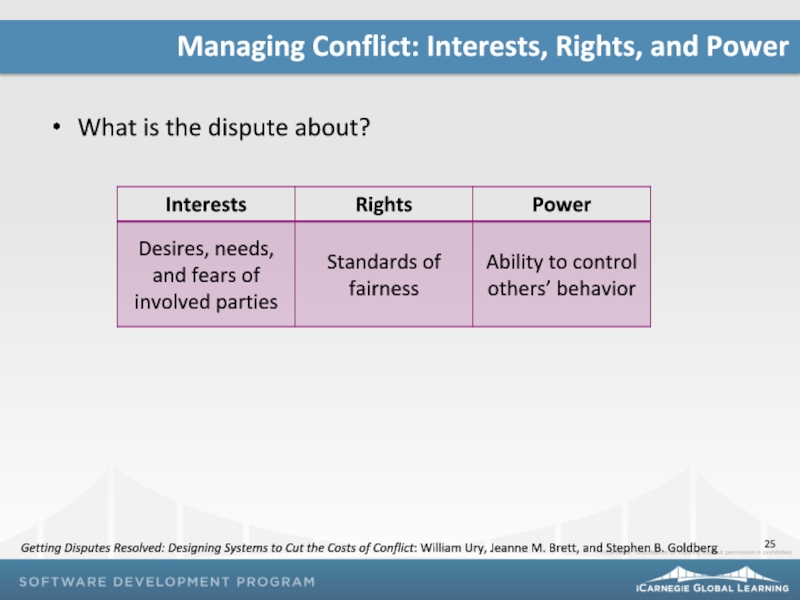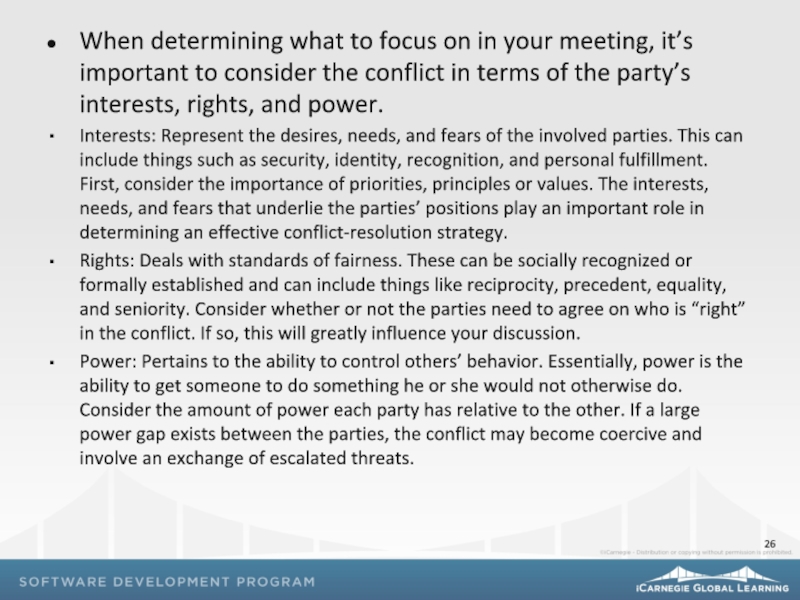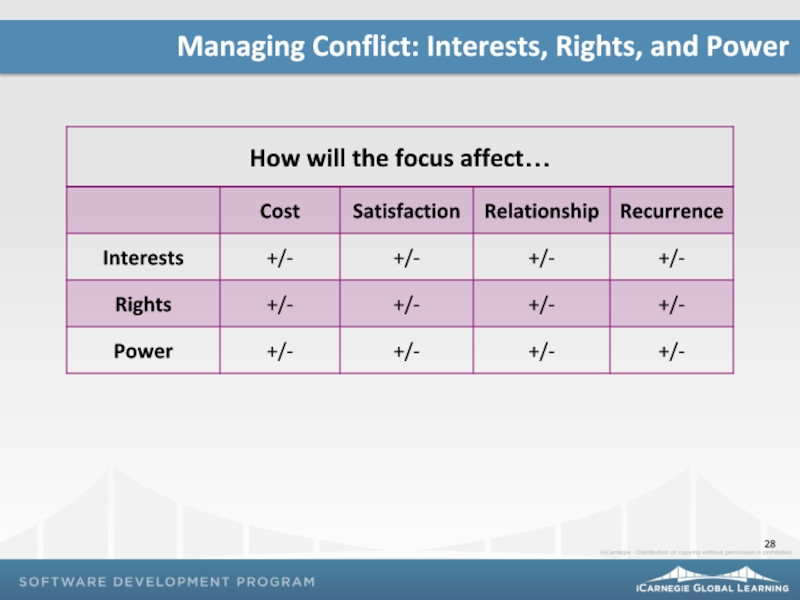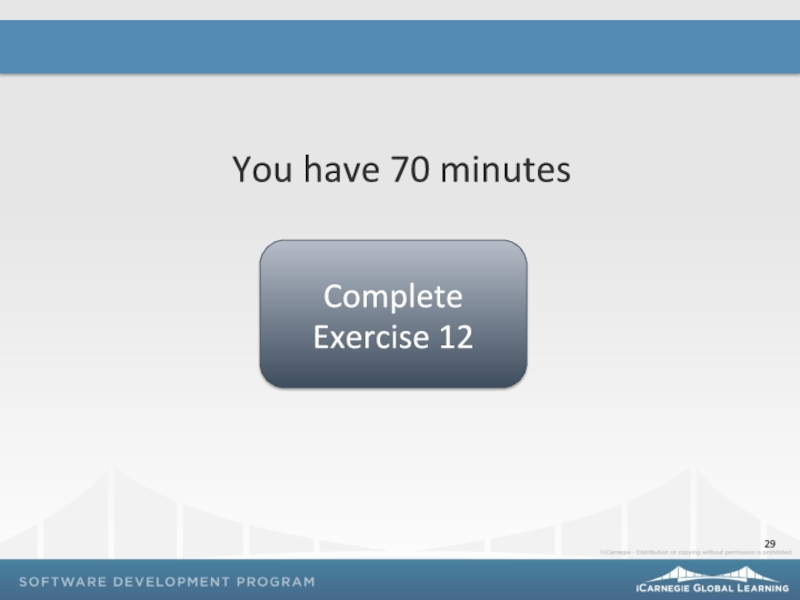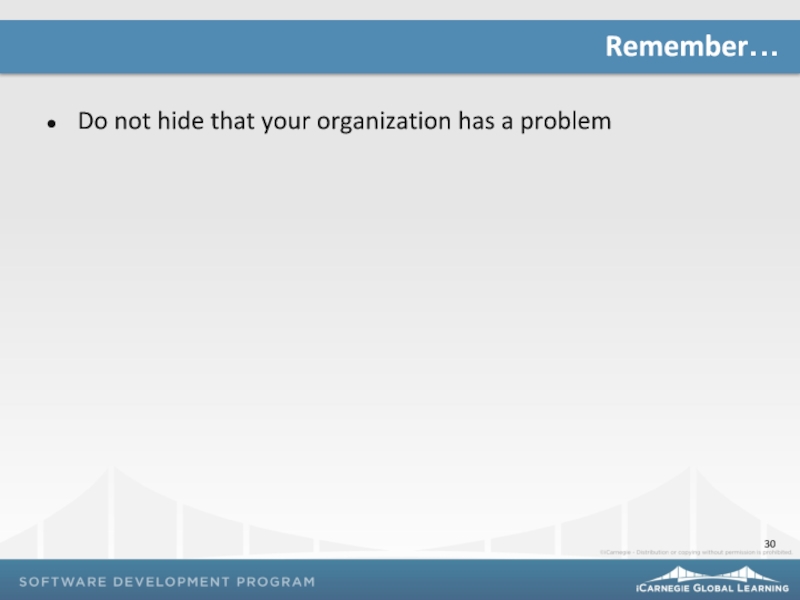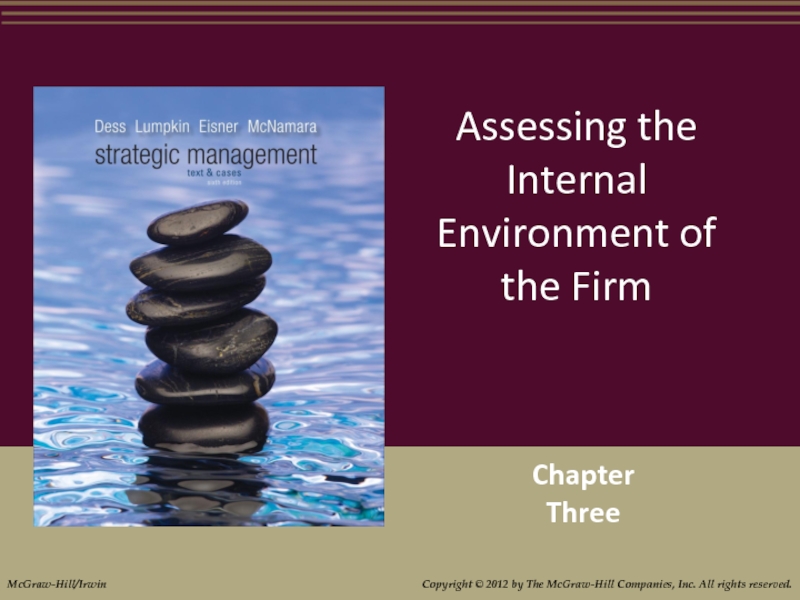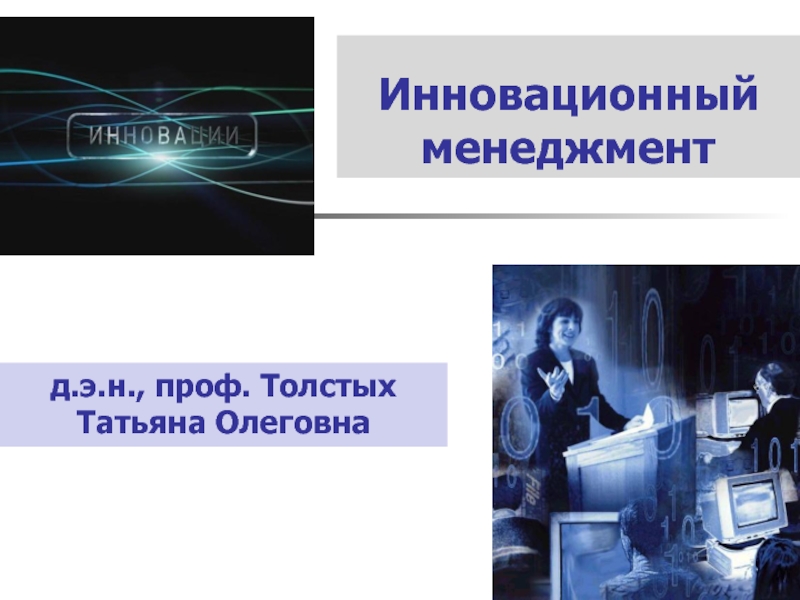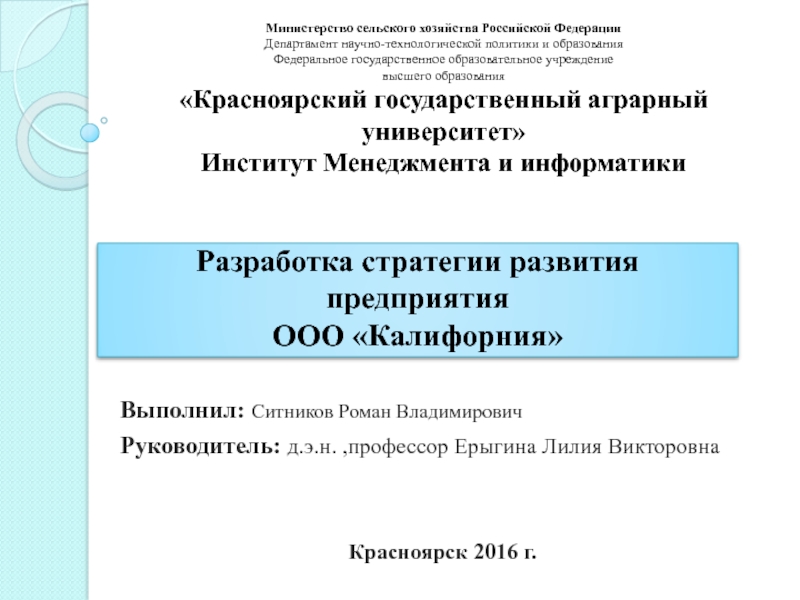- Главная
- Разное
- Дизайн
- Бизнес и предпринимательство
- Аналитика
- Образование
- Развлечения
- Красота и здоровье
- Финансы
- Государство
- Путешествия
- Спорт
- Недвижимость
- Армия
- Графика
- Культурология
- Еда и кулинария
- Лингвистика
- Английский язык
- Астрономия
- Алгебра
- Биология
- География
- Детские презентации
- Информатика
- История
- Литература
- Маркетинг
- Математика
- Медицина
- Менеджмент
- Музыка
- МХК
- Немецкий язык
- ОБЖ
- Обществознание
- Окружающий мир
- Педагогика
- Русский язык
- Технология
- Физика
- Философия
- Химия
- Шаблоны, картинки для презентаций
- Экология
- Экономика
- Юриспруденция
Conflict management презентация
Содержание
- 1. Conflict management
- 2. What Is Conflict? How Do We
- 3. Course Progress Module 0: Factors Influencing
- 4. What Is Conflict? “Life is not
- 5. What Is Conflict? A condition between
- 6. What Is Conflict? What happens when
- 7. How Do We Behave In Conflict?
- 8. How Do We Behave In Conflict?
- 9. How Do We Behave In Conflict?
- 10. How Do We Behave In Conflict? Discomfort Incident Misunderstanding Tension Crisis
- 11. Discomfort occurs early on in the conflict,
- 12. How Do We Behave In Conflict?
- 13. The triggering event: In this phase, a
- 14. How Do We Behave In Conflict?
- 15. How Do We Behave In Conflict?
- 16. How Do We Behave in Conflict?
- 17. The upper left corner, “fight,” occurs when
- 18. How Do We Behave In Conflict?
- 19. Managing Conflict: Mediation What is mediation?
- 20. Managing Conflict: Types of Mediation
- 21. Managing Conflict: Structure of Conflict Interdependency:
- 22. Managing Conflict: Process Be proactive Address
- 23. Managing Conflict: Process Plan the meeting
- 24. Managing Conflict: Process Conduct the meeting
- 25. Managing Conflict: Interests, Rights, and Power
- 26. When determining what to focus on in
- 27. Managing Conflict: Interests, Rights, and Power
- 28. Managing Conflict: Interests, Rights, and Power
- 29. You have 70 minutes Complete Exercise 12
- 30. Remember… Do not hide that your organization has a problem
Слайд 2
What Is Conflict?
How Do We Behave in Conflict?
Managing Conflict
Exercise 12:
Topics and Agenda
Слайд 3
Course Progress
Module 0: Factors Influencing Human Interaction
Module 01: Communication
Module
Module 03: Negotiation
Module 04: Conflict Management
Module 05: Relationship Management
Module 06: Leadership
Слайд 4
What Is Conflict?
“Life is not about winning and losing - it‘s
The Conflict Resolution Network (www.crnhq.org)
Слайд 5
What Is Conflict?
A condition between people who:
Are task interdependent
May
Find fault with the other
Use behaviors that cause a business problem
Слайд 6
What Is Conflict?
What happens when we don’t deal with conflict constructively?
Wasted
Lower motivation and productivity
Conflict-related absenteeism
Health costs
Loss of investment in skilled employees
Conflict-incited theft, sabotage, vandalism, and damage
Restructuring around the problem
Degraded decision quality
Слайд 7
How Do We Behave In Conflict?
What are some examples of conflict
Are some behaviors more effective than others in dealing with conflict?
Why do we behave in a certain ways during conflict?
Слайд 8
How Do We Behave In Conflict?
What is Fight-or-Flight?
Physiological response
Developed as survival mechanism
Physical changes:
Слайд 9
How Do We Behave In Conflict?
What are some examples of
What are some examples of “Flight” behavior? What type of message does this behavior send?
Слайд 11Discomfort occurs early on in the conflict, when the conflict is
Incidents: This stage involves a sudden, brief occurrence that upsets the people involved. The incidents generally carry some type of negative meaning and, therefore, increase the tension within the relationship. At this stage, it becomes clearer that some kind of problem exists. Individuals often try to convince the other party that their perspective is correct. This often causes the conflict to escalate to the next stage.
Misunderstandings: In this stage, misunderstanding contributes to the escalation of the conflict. The involved parties often don’t understand each other’s motives. Additionally, facts are often confused or misperceived. Because thoughts keep returning frequently to the problem, the conflict generally escalates.
Tension: At this stage, trust within the relationship is generally nonexistent. The involved parties often do not believe that there is a reasonable resolution to the conflict. At this stage, each side will continue to pressure the other side to change their opinion. Unfortunately, this often causes the conflict to continue to escalate.
Crisis: At this stage, the involved parties can often be hostile towards one another. Interactions, when they take place, are very negative. Once a conflict has reached this stage, it is unlikely the conflict can be resolved without assistance.
Слайд 12
How Do We Behave In Conflict?
Adapted from The Retaliatory Cycle Model:
Perception of Threat
Emotional Response
Acting Out
Repetition
Trigger
The Retaliatory Cycle
another negative reaction on conflict
Слайд 13The triggering event: In this phase, a conflict is triggered by
Perception of threat: In this phase, the involved parties perceive that there is an issue. The perceived threat can arise from a number of sources, whether they be actual hostile intent or misinterpretation of the other person’s words or actions.
Emotional response: In this phase, an individual responds emotionally to the triggering event and his perception of the event. He may feel threatened, undermined, afraid, or even angry. This occurs as a natural, defensive response to a threat.
Acting out: In this phase, an individual behaves in a way that expresses his or her emotions by “acting out”. This can include being non-communicative, distancing yourself from the other party, acting hostile, being destructive, etc.
Слайд 14
How Do We Behave In Conflict?
Adapted from The Retaliatory Cycle Model:
Perception of Threat
Emotional Response
Acting Out
Repetition
Trigger
The Retaliatory Cycle
X
X
X
Слайд 15
How Do We Behave In Conflict?
What similarities and differences do you
Слайд 17The upper left corner, “fight,” occurs when the responding person’s perceived
The lower right, corner, “flight,” occurs when the conditions are opposite to “fight.” This is an accommodating conflict management style which can be summed up as “I lose, you win.” Individuals with this style typically place the concerns of others over their own needs. Those who value the relationship over the outcome are likely to use this style.
The lower left corner, “avoiding,” meets no one’s needs. This style of dealing with conflict is not assertive or cooperative. The conflict is simply not dealt with at all. Individuals with this style often find creative ways to avoid the issue. However, in the end, using this style is a lose-lose situation for all parties.
The upper right corner, “flow,” which is a collaborative style, occurs when a solution is found that meets the needs of both parties. The opposite of avoiding conflict, this style is assertive and cooperative. With a collaborative approach to managing conflict, you work to find a solution that fully satisfies the concerns and needs of both parties. While this style produces a win for both parties, it can be time consuming and difficult to find a solution that works for everyone.
In the middle of the chart, you’ll find “compromising.” Someone with a compromising style is equal in their use of assertiveness and cooperation. With this style, you will need to make some accommodations to the other party. However, you will not have to fully relinquish your concerns, as you would with an accommodating style. Additionally, while this style directly addresses the conflict, it does not explore the issues in as much depth as the collaborating style. For these reasons, this represents a way of managing conflict that partially meets the needs of both parties.
Слайд 18
How Do We Behave In Conflict?
What were the results of your
Слайд 19
Managing Conflict: Mediation
What is mediation?
Meeting
To talk about the problem
Without interruption
Long
Слайд 20
Managing Conflict: Types of Mediation
Preventive
Self
Managerial
Professional
Everyday/
Automatic Skills
Formal
Skills
Informal
Skills
Слайд 21
Managing Conflict: Structure of Conflict
Interdependency:
Number of parties:
Parties represent others:
Urgency:
Communication channels:
Same
Same time – Different place?
Different time – Same Place
Different time – Different place?
Слайд 22
Managing Conflict: Process
Be proactive
Address conflict before it escalates
Deal with conflict directly
Meet face-to-face
Free of interruptions
Long enough to find a solution to the conflict (90 minutes is recommended)
Слайд 23
Managing Conflict: Process
Plan the meeting
Clearly state purpose
Decide what to focus on
Schedule
Слайд 24
Managing Conflict: Process
Conduct the meeting
Agree on rules:
Keep talking until you
Stay in the process (no “walkaways”)
Avoid one-sided solutions (no “power plays”)
Be open-minded
Depersonalize problem
Acknowledge other party’s concerns
Do not react emotionally
Слайд 25
Managing Conflict: Interests, Rights, and Power
What is the dispute about?
Getting Disputes
Слайд 26When determining what to focus on in your meeting, it’s important
Interests: Represent the desires, needs, and fears of the involved parties. This can include things such as security, identity, recognition, and personal fulfillment. First, consider the importance of priorities, principles or values. The interests, needs, and fears that underlie the parties’ positions play an important role in determining an effective conflict-resolution strategy.
Rights: Deals with standards of fairness. These can be socially recognized or formally established and can include things like reciprocity, precedent, equality, and seniority. Consider whether or not the parties need to agree on who is “right” in the conflict. If so, this will greatly influence your discussion.
Power: Pertains to the ability to control others’ behavior. Essentially, power is the ability to get someone to do something he or she would not otherwise do. Consider the amount of power each party has relative to the other. If a large power gap exists between the parties, the conflict may become coercive and involve an exchange of escalated threats.
Слайд 27
Managing Conflict: Interests, Rights, and Power
Getting Disputes Resolved: Designing Systems to
Distressed Conflict Resolution System
Effective Conflict Resolution System
